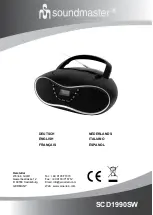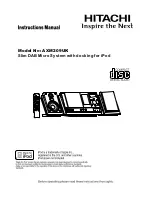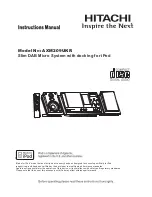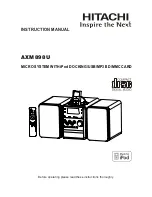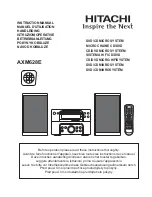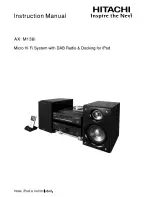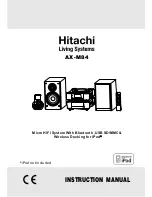
MagicQ User Manual
202 / 348
and repeated elements the general element will be allocated the base head number and the repeated elements will have increasing
head numbers from the base element.
The Head Editor now shows the full channel list in View Chans including the repeated channels.
24.11.1
Patching Heads with Duplicated attributes
From versiosn 1.6.6.2 MagicQ has improved support for Heads with more than one element of an attribute - for example a LED
Wash light with 5 RGB elements or a club light with 2 tilt channels. Heads set as "Duplicated" now allow access to the individual
elements and allow FX to be run over the individual elements.
By default the duplicated elements are treated as one element - so the 2nd, 3rd and 4th elements just copy the programming from
the 1st element. This ensures that the Head is simple to use and appears to act as if it only had a single element.
When locating, selecting palettes and using soft buttons or encoders on attribute parameters only the first element is made active
in the programmer and therefore only the first element is recorded into Cues. When the Cues are played back then MagicQ copies
the calculated values from the 1st element to the other elements.
Individual elements can be selected using the dot (.) operator. For example to select the 1st element only, enter .1 NEXT HEAD
or .1 @@. This sub selects only the 1st element. Pressing returns the selection to all elements. When a sub selection is active
on a Duplicated Head then the specific elements will be made active in the Programmer and subsequently recorded into Cues.
When the Cues are played back MagicQ uses the programming from the Cue for elements that have been recorded in to the Cue,
only copying for elements that have not been recorded.
Palettes values are created only for the first element. When a sub selection is in operation MagicQ will use the value in the Palette
for the first element regardless of the element selected - this avoids the need for creating separate palette information for each
element. When a Palette is updated it will update Cues that use that Palette from the data for the 1st element regardless of which
element is active in the Cue - ensuring that the Cue gets updated as expected.
When selecting FX for channels on a Duplicated Head that have multiple elements MagicQ prompts three options for applying
the FX:
• Dup Elements
• Include Elements
• Use Elements
Dup Elements treats the elements as duplicated - i.e. all elements in the head do exactly the same thing. This is the default
operation which treats all the elements in a head as one. In software prior to v1.6.5.8 this was the only supported mdoe of FX for
Duplicated Heads.
Include Elements includes all the elements in the FX enabling separate control of each of the elements as if they were separate
heads. For example if you apply a FX to 4 heads each with 3 elements then the FX would be spread over the 12 elements.
Use Elements runs the FX within the Heads, with all Heads performing the same FX synchronously across their elements. This
is the same as Include Elements except that MagicQ automatically sets Parts to the number of elements within the heads causing
all Heads to have the same offset.
Heads are set as Duplicated Heads in the Multiple Heads Type field in the Head Editor. In the Head Editor, View Chans the
element field (cursor right) is used to indicate the different elements. Duplicated elements always start from Element 1. All
elements that are not duplicated are set to 0 (Main Element). For heads that have both a main element and a repeated element -
e.g. a master RGB and then repeated RGB for each element then the master RGB is element 0 and the repeated RGBs start from
1.









































